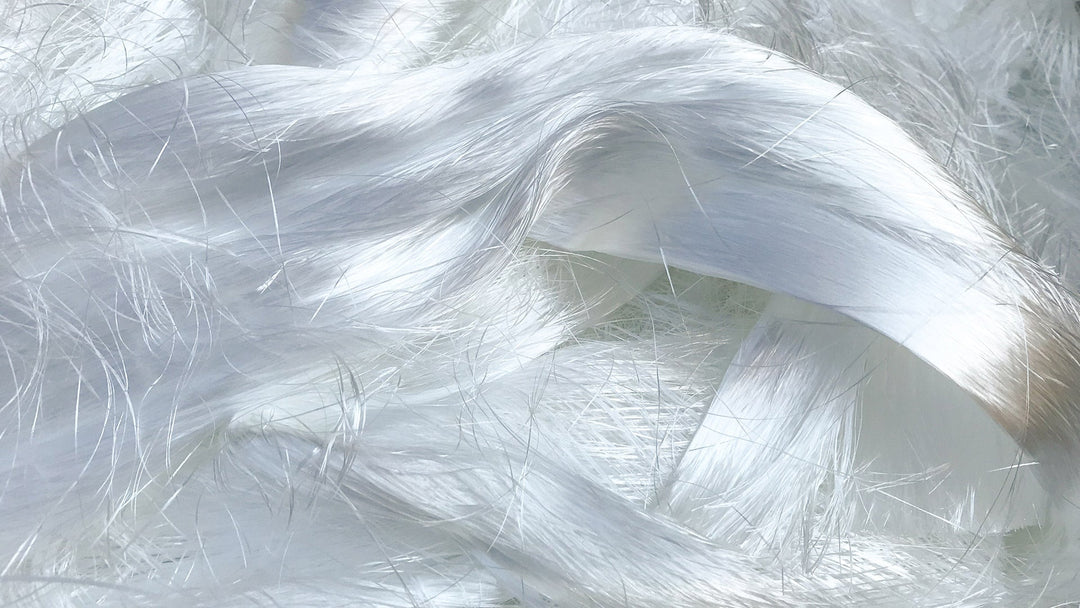As a sustainability consultant, you analyse environmental impact data every day. But when it comes to your wardrobe, the numbers behind polyester's environmental footprint might surprise even the most informed professionals. In 2025, synthetic fabrics still dominate the fashion landscape—but at what cost to our planet and our health?
What Exactly Is Polyester?
Before we dive into its impacts, let's understand what we're dealing with:
Polyester is a synthetic petroleum-based fiber, derived from PET (polyethylene terephthalate)—the same plastic used in water bottles. The production process involves extracting crude oil from the earth, refining it into petroleum, converting petroleum into polyester polymers, and then extruding these polymers into fibers. These fibers are then spun into yarn and woven or knitted into fabric.
This entirely artificial process creates a material that never truly biodegrades. Instead, it eventually breaks down into microplastics that persist in our environment indefinitely, accumulating in our oceans, soil, and even our bodies.
The Environmental Impact of Polyester
Carbon-Intensive Production
The numbers tell a sobering story about polyester's carbon footprint. Polyester production releases 706 billion kg of CO₂ annually—a staggering figure that continues to grow as production increases. Each kilogram of polyester generates 11.5 kg CO₂e, making it one of the most carbon-intensive fabrics in common use.
The manufacturing process requires approximately 125 MJ of energy per kg—nearly double that of cotton. With annual production exceeding 57 million tons and increasing yearly, the scale of this impact is difficult to overstate. To put this in perspective, the carbon footprint of a single polyester shirt is equivalent to driving a car for 35 miles.
These emissions contribute significantly to climate change, creating environmental impacts that disproportionately affect vulnerable communities around the world. The true cost of that inexpensive polyester blouse includes climate disruption that will be felt for generations.
Microplastic Pollution
Perhaps even more concerning is what happens during use and at end-of-life. Every time polyester clothing is washed, it releases microplastic fibers—up to 700,000 in a single load of laundry. These invisible plastic fragments are now found in 94% of tap water samples worldwide, from the deepest ocean trenches to remote Arctic ice, and even in human blood, organs, and placental tissue.
These microplastics don't just exist passively in the environment—they actively absorb and concentrate environmental toxins, enter the food chain, and accumulate in the tissues of marine life and humans. Unlike natural fibers that break down over time, these microplastics persist for centuries, creating a legacy of pollution that will outlive us all.
The microscopic size of these particles makes them nearly impossible to filter out of water systems once released, meaning that every polyester garment ever produced continues to shed microplastics throughout its use and long after disposal.
Waste Crisis
Polyester's end-of-life scenario is equally troubling. These garments take over 200 years to decompose in landfills, releasing methane (a potent greenhouse gas) and leaching chemicals into groundwater as they very slowly break down. When incinerated, polyester releases toxic substances including dioxins and heavy metals.
Currently, polyester clothing forms approximately 35% of annual microplastic pollution in oceans, with only about 1% being effectively recycled despite marketing claims about sustainability. The reality is that most "recycled" polyester comes from plastic bottles rather than post-consumer clothing, doing little to address the mounting textile waste crisis.
Health Implications of Polyester Clothing
The environmental concerns alone should give us pause, but polyester also presents potential health concerns that deserve attention, especially for items worn directly against our skin for hours each day.
Skin Health Issues
Our skin is our largest organ and remarkably absorbent. Studies have documented several skin-related concerns with synthetic fabrics. Polyester's reduced breathability traps moisture and heat, creating ideal conditions for bacterial and fungal growth. The rough texture of polyester fibers can cause friction and irritation, particularly in sensitive areas or during active movement.
Some individuals experience allergic contact dermatitis from polyester or its finishing chemicals, and existing skin conditions like eczema and acne are often exacerbated by synthetic fabrics. These issues aren't just cosmetic—they can lead to chronic skin problems and discomfort that affects quality of life.
Endocrine Disruption Concerns
Manufacturing polyester requires chemical additives that may impact hormonal systems. These include phthalates used as plasticizers, antimony trioxide as a catalyst, formaldehyde for "wrinkle-free" properties, and various textile dyes and finishing agents.
Research has linked some of these chemicals to hormonal imbalances, developmental issues, reproductive concerns, and thyroid disruption. While acute exposure may be limited, the chronic, low-dose exposure from daily wear raises questions about cumulative effects, particularly for vulnerable populations like children and pregnant women.
Temperature Regulation Problems
Polyester significantly impacts your body's natural temperature regulation. The synthetic fibers block natural airflow to and from the skin, trapping heat and moisture and creating a microclimate that can be significantly warmer than the ambient temperature. This interference with the body's natural cooling mechanism causes discomfort and excessive sweating.
The petroleum base of polyester creates static electricity, particularly in dry environments, while the structure of the fibers retains odors as oils bind to the synthetic material. These properties create a wearing experience that works against your body's natural processes rather than supporting them.
The Professional Impact of Synthetic Clothing
As a sustainability professional, your wardrobe choices have additional significance beyond personal comfort and health effects.
Credibility Considerations
Your clothing choices reflect your values in tangible ways that clients and colleagues notice. When you advise organizations on sustainable practices while wearing petroleum-based synthetics, there's a disconnect that can undermine your message. Conversely, when your personal choices align with your professional advice, it strengthens your credibility and demonstrates authentic commitment.
Industry standards shift when professionals demonstrate viable alternatives to conventional practices. By choosing natural fibers, you help normalize sustainable fashion in professional settings and create space for others to make similar choices without fear of appearing unprofessional or impractical.
Workplace Comfort and Performance
Beyond optics, your clothing impacts your workday in practical ways. Synthetic fabrics can cause discomfort during long meetings or presentations, while temperature irregularities distract from important work. Non-breathable materials affect confidence and presentation when you're concerned about overheating or odor.
Most importantly, wearing materials that contradict your professional values creates subtle cognitive dissonance that can affect your sense of purpose and authority when advising others on environmental best practices.
The Sustainable Alternative: Natural Fibers
The good news is we have better options that don't sacrifice quality, performance, or style. Natural fibers offer solutions to each of polyester's problems while creating additional benefits.
Bamboo: The Superior Alternative
Bamboo offers advantages over polyester in every category, making it an ideal replacement for conscious professionals. From an environmental perspective, bamboo absorbs 5 tonnes of CO₂ per hectare annually—actively reducing atmospheric carbon rather than adding to it. It grows without fertilizers or pesticides, requires only natural rainfall, and is 100% biodegradable at end-of-life.
The performance benefits of bamboo are equally impressive. Natural temperature regulation keeps you comfortable in varying environments, while the fiber structure absorbs 47% more moisture than conventional fabrics. Bamboo provides built-in UV protection and natural antibacterial properties that keep garments fresher longer.
Health benefits include hypoallergenic properties for sensitive skin, chemical-free production processes, breathability for skin health, and reduced exposure to synthetic compounds. These advantages make bamboo particularly valuable for those with skin sensitivities or health concerns about chemical exposure.
Making the Transition Away From Polyester
Transforming your wardrobe doesn't need to happen overnight. A practical approach starts with understanding what you currently own and making strategic replacements over time.
Audit Your Current Wardrobe
Begin with an informed inventory of your closet. Take time to check labels for fabric content and identify which items contain polyester or other synthetics. Pay particular attention to pieces that contact your skin directly and for extended periods, as these have the most immediate health impact.
Note which synthetic pieces you wear most frequently, as replacing these will create the greatest benefit both environmentally and for your personal comfort. This audit process often reveals surprising insights about how much polyester has infiltrated even high-end wardrobes.
Strategic Replacement
As pieces wear out or when you're ready to make changes, replace thoughtfully rather than impulsively. Start with items closest to your skin, such as undergarments, t-shirts, and sleepwear, since these have the most direct contact with your body. Focus next on pieces worn in high-temperature settings or during physical activity, where synthetic fabrics create the most discomfort.
Consider which garments you wear most frequently, as these create the greatest environmental impact over time. Look for versatile replacements that serve multiple needs, reducing the total number of items required in your wardrobe. This strategic approach makes the transition both financially and practically manageable.
Care and Maintenance
For synthetic pieces still in your wardrobe, minimize their environmental impact through thoughtful care. Consider using microplastic-catching laundry bags that trap fibers during washing, preventing them from entering waterways. Wash at lower temperatures to reduce fiber shedding and extend garment life.
Air dry synthetic items when possible to reduce energy consumption and microplastic release, and avoid fabric softeners that coat fibers and increase shedding. These practices help mitigate impact while you transition to more sustainable options.
A Professional's Guide to Sustainable Fabric Choices
For conscious professionals, natural alternatives offer both performance and sustainability benefits tailored to different needs and preferences.
Bamboo: The All-Around Champion
Bamboo excels in professional environments requiring comfort during long days. Its temperature regulation properties make it ideal for variable environments like offices with unpredictable heating and cooling. The hypoallergenic qualities benefit those with sensitive skin concerns, while its versatility works across seasons and settings.
Bamboo's drape and texture create elegant, professional silhouettes that move naturally with the body. The fabric resists wrinkles naturally without chemical treatments, maintaining a polished appearance throughout demanding days. These properties make bamboo ideal for travel wear and pieces that transition from day to evening events.
Organic Cotton: The Versatile Classic
Organic cotton offers advantages for casual professional settings and direct skin contact. Its familiar feel and exceptional breathability make it comfortable in warm environments, while its durability and longevity provide excellent value over time.
The versatility of organic cotton spans casual to business casual settings, with options ranging from structured blazers to relaxed knits. Its natural fibers improve with washing rather than degrading, creating pieces that become more comfortable over time.
Hemp: The Durable Innovator
Hemp provides exceptional durability for structured professional pieces and long-term investment items. Its natural UV resistance makes it suitable for outdoor exposure situations, while its strength-to-weight ratio creates lightweight pieces with remarkable longevity.
Hemp's temperature-regulating properties work in both warm and cool environments, while its moisture-wicking capabilities keep you comfortable during active days. The distinctive texture adds visual interest to professional wardrobes while maintaining appropriate formality.
The YouBamboo Solution
Our commitment to replacing polyester with sustainable alternatives drives everything we do at YouBamboo. We maintain complete transparency about material composition, allowing you to make fully informed choices. Our rigorous standards for sustainability certification ensure that environmental claims are substantiated rather than aspirational.
Our innovative technology maximizes performance while minimizing environmental impact, and our professional designs never sacrifice style for sustainability. Each piece in our collection saves an average of 1.2 pounds of CO₂, uses renewable energy in production, supports sustainable farming communities, and provides a healthier alternative to synthetic materials.
Take Action: Your Professional Wardrobe Evolution
Ready to align your wardrobe with your values? Start by replacing your most-worn polyester pieces with bamboo alternatives. Experience the performance difference first-hand to reinforce your commitment to the transition. Track the environmental impact of your wardrobe changes using our carbon calculator to quantify your positive impact.
Share your experience with colleagues and clients when appropriate—not as promotion, but as authentic conversation about practical sustainability choices. The transition away from polyester isn't just about personal choices—it's about leading by example and creating meaningful change in your professional sphere.
By making conscious choices about something as fundamental as what we wear against our skin, we demonstrate that sustainability isn't abstract or distant—it's immediate, practical, and accessible to everyone.
About the Author: This article was written by YouBamboo's sustainability team in collaboration with environmental scientists specializing in textile impact assessment.
Data Sources: Environmental Protection Agency, Sustainable Fashion Report 2025, Textile Research Journal, YouBamboo Internal Research







